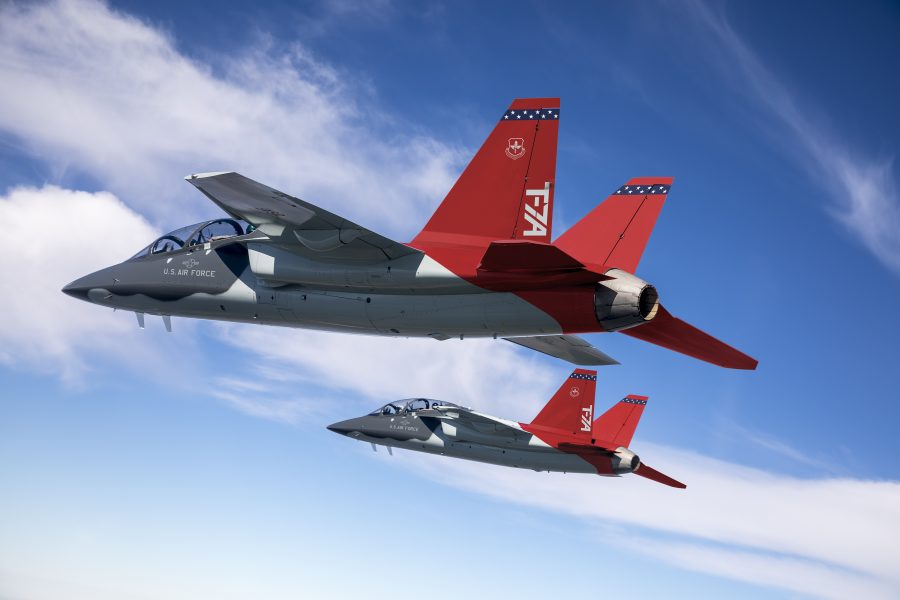The Ground-Based Training System that goes with the T-7A Red Hawk advanced jet trainer has passed its Critical Design Review, concluding 18 months of development work and paving the way for fabrication of simulators and other devices, Boeing announced April 3.
The Air Force reviewed the T-7A’s “ability to conduct live, virtual, and constructive training exercises, through dynamic motion-enabled trainer cockpits; high resolution projection systems; digital debrief stations and simulated avionics; as well as egress training that will better prepare pilots for escaping an aircraft during an emergency,” Boeing said. The CDR took five days to complete.
The CDR was conducted virtually between the System Program Office at Wright-Patterson Air Force Base, Ohio, and the Boeing T-7A Red Hawk program office in St. Louis. Also participating were Air Education and Training Command’s office at Edwards Air Force Base, Calif., Air Force and Office of the Secretary of Defense acquisition officials at the Pentagon, and the Defense Contracting Management Agency.
The CDR for the aircraft itself was conducted Sept. 10-19, 2019. Initial capability is planned for Joint Base San Antonio-Randolph, Texas, in 2024.
“Through CDR we confirmed the designs for our advanced training devices that will give future pilots the most realistic and effective training ever delivered,” said Sherri Koehnemann, T-7A support and training director with Boeing Global Services.
Boeing, along with its partner Saab of Sweden, received a $9.2 billion contract in September 2018 to develop the T-7A—since nicknamed the “Red Hawk”—and to build 351 of the aircraft and 46 simulators.
A company spokesman said Boeing considers the T-7A a “franchise program,” with potential global sales of trainer aircraft, companion trainers, light attack versions, and “Aggressor” versions, as well as simulators and ground-based training gear to be $40 billion. Company officials have previously predicted the world trainer market alone to be 2,600 airplanes, including 475 for the Air Force.
Boeing invested nearly $100 million of its own money in developing the jet and bid nearly $10 billion below the Air Force’s own estimates for further development, building a production capability, and building the initial jets.

